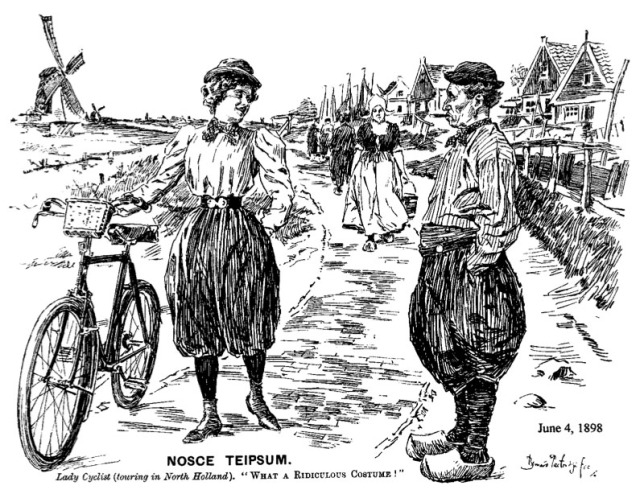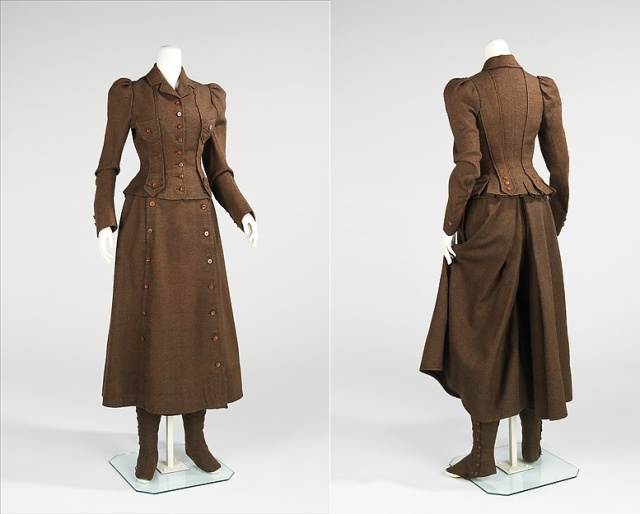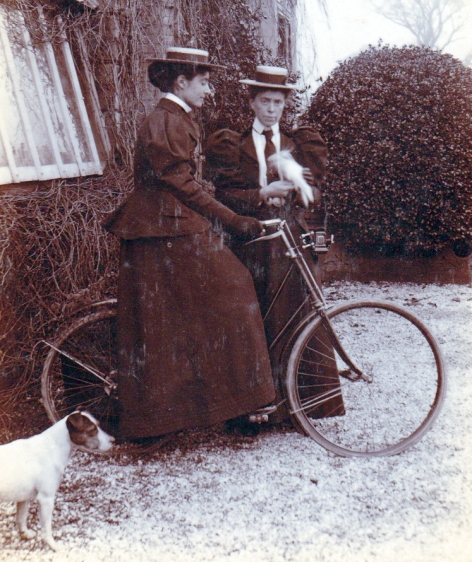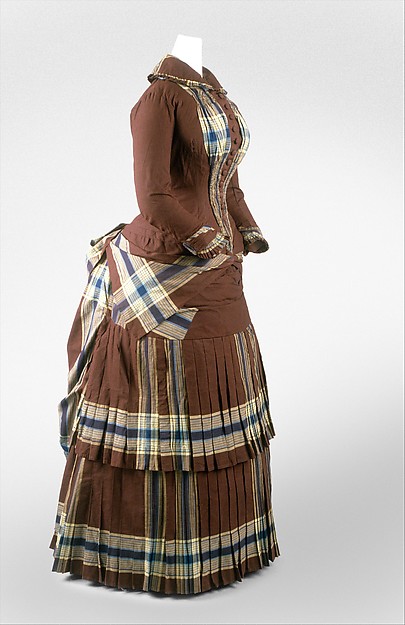Quite a lot has already been written about women’s bicycling dress in the 1890s, although my dissertation is the most detailed research on this project that I have been able to find. There is, however, a fair amount of misinformation about what women wore. A common claim is that the majority of women gave up corsets and skirts when they adopted the bicycle, which just isn’t true.
It’s certainly a compelling story- that women discovered the bicycle, threw off their cumbersome garments, and rode into a liberated future. Yet, while there are numerous visual examples bloomers (or knickerbockers), there is not much evidence that they ever became the norm for cycling. They often were considered peculiar and even immodest. They revealed more of a woman’s legs than typical dress and their split form made it possible for women to straddle a diamond-frame bicycle, such as the one pictured below.

They were an easy target to ridicule, and satiric magazines like Punch, Puck, and Life regularly made fun of women in bloomers. The myriad images are no doubt part of the reason that so many people believe bloomers were common.

So if women didn’t wear bloomers, what did they wear? Typically, women wore shortened skirts, although how short could vary widely. Some skirts were only three inches above the ground, whereas more daring women might wear a skirt that fell to just below the knee. It’s impossible to establish the average length, but most skirts were probably between lower calf and ankle length. Some women also wore skirts that were divided, almost like extra-wide culottes. These skirts required much more fabric, but some writers believed that they were safer and kept women’s skirts in place. The ideal divided skirt would look just like an ordinary skirt.

Women typically wore matching or coordinated jackets for cycling, but they also could wear a shirtwaist (blouse) tucked into their skirt. Some of the jackets I studied had boning for added structure. Many women continued to wear corsets, although tight-lacing was not recommended. There were special bicycling corsets, although in some cases companies may have marketed a special “bicycling” corset to convince women they needed more corsets. Some women adopted less structured corsets or health waists, which could have less boning or even cording in place of metal bones. Corsets would have provided bust support, although I have found no written examples where this purpose is articulated.
To the modern eye, many cycling costumes may not appear all that much different than other types of every day dress, but there are functional differences. Cycling costumes tended to be made out of sturdy wool, although there were linen costumes, as well. Some had features such leather stitched around the hem, which would protect the skirt from ripping if it got caught (and presumably also made it harder for the skirt to catch). Some women would not have purchased or sewed specialized costumes, but there were numerous options available for those who had the means and inclination.











